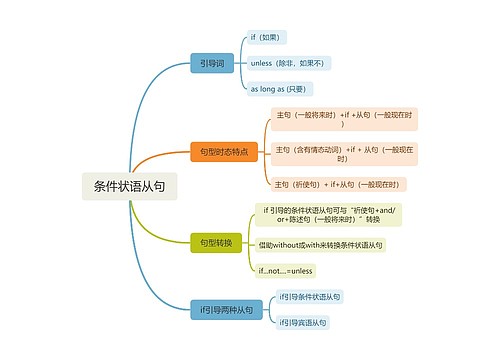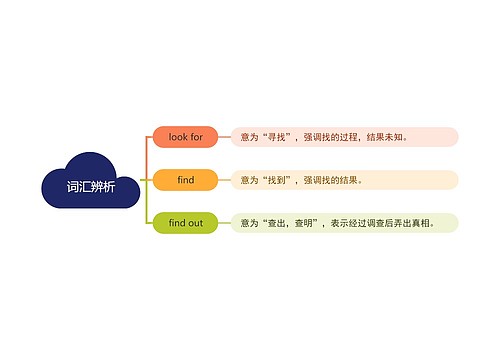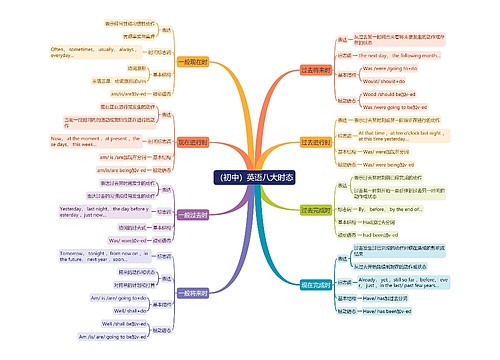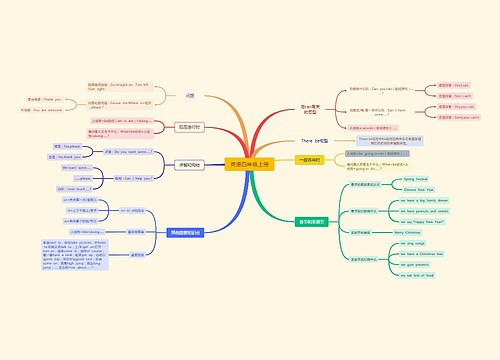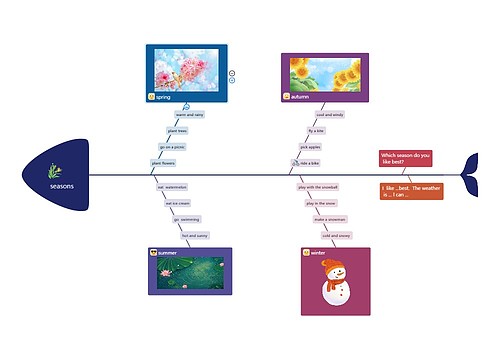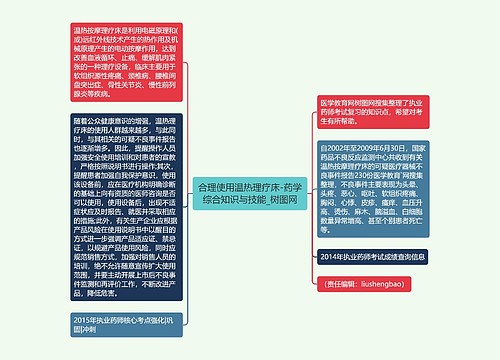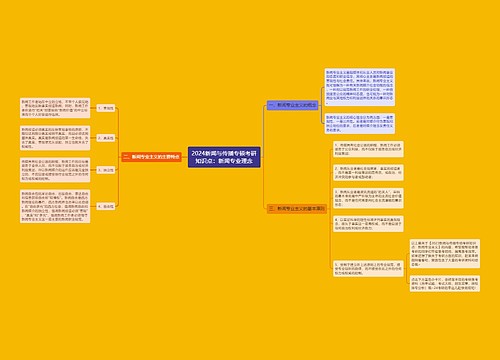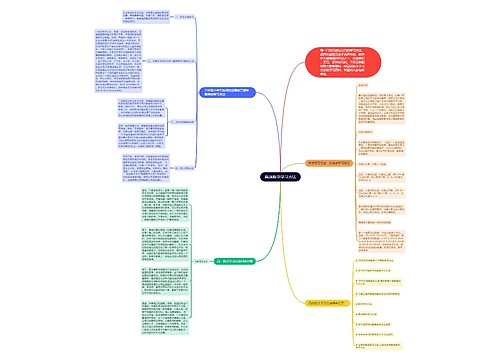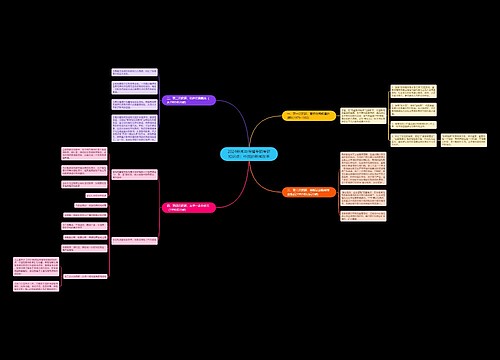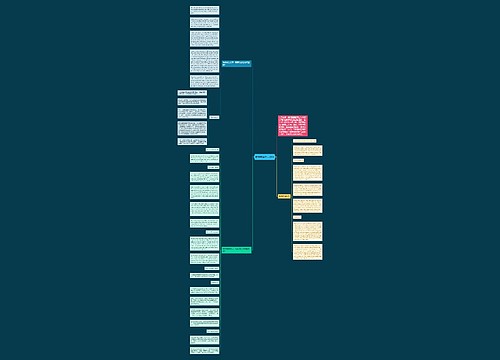
高三英语听力资料思维导图
好想你
2023-04-04

高三英语听力资料
英语听力资料
对于英语,我们需要把陌生的单词片语和句型不断的熟悉和熟练,使之成为我们的一种习惯,把它变成我们的第二天性。因此,重复重复再重复,熟练熟练再熟练,是学会英语的不二法门。
树图思维导图提供《高三英语听力资料》在线思维导图免费制作,点击“编辑”按钮,可对《高三英语听力资料》进行在线思维导图编辑,本思维导图属于思维导图模板主题,文件编号是:a309f005ddd2bc6efe0905be9c791332
思维导图大纲
相关思维导图模版
高三英语听力资料思维导图模板大纲
对于英语,我们需要把陌生的单词片语和句型不断的熟悉和熟练,使之成为我们的一种习惯,把它变成我们的第二天性。因此,重复重复再重复,熟练熟练再熟练,是学会英语的不二法门。下面是树图网给大家整理的一些高三英语听力的学习资料,希望对大家有所帮助。
高三英语听力试题参考
一、美国摇滚灾难日,三位当红歌手英年早逝
练习方式:听写
新闻历史背景,帮助您了解本期新闻内容
1、一架客机在爱荷华州失事,机上三位当红摇滚手当场殒命
2、德州州长布什拒绝给予死刑前考虑期,塔克尔成为美国近十多年来第一个被执行死刑的女杀人犯
3、美国"发现"号航天飞机升空,柯斯林成为美国航天第一位女机长
4、音乐制作人菲尔·斯别克特因谋杀一名女演员在加州被捕
人名:
1、Buddy Holly:布迪·霍里
2、Ritchie Valens:里奇·瓦伦斯
3、The Big Bopper
注:以上三位都是美国当时摇滚乐坛的重量级人物
4、Karla Faye Tucker:卡拉?法伊?塔克尔
5、Eileen Collins:艾琳?柯林斯
6、Phil Spector:菲尔?斯别克特
7、Lana Clarkson
地名:
1、Clear Lake
2、Iowa:爱荷华州
3、Cape Canaveral:卡纳维拉尔角
4、Florida:佛罗里达
听写参考文本:
Feb 3rd, 1959, "And do you believe in rock-and-roll, can music save your mortal soul, and can you teach me how to dance..." A plane crash near Clear Lake, Iowa, claims the lives of 3 early stars of rock-and-roll, Buddy Holly, Ritchie Valens and "The Big Bopper".
1998, Karla Faye Tucker becomes the first woman executed in the US in nearly a decade and a half. Texas governor George W. Bush rejects a bid for clemency " I have concluded judgements about the heart and soul of an individual on Death Row are best left to a higher authority."
1994, space shuttle Discovery blasts off from Cape Canaveral, Florida, with a woman, Eileen Collins, in the pilot's chair for the first time.
And 2003, record producer Phil Spector is arrested in a shooting death of actress Lana Clarkson in his mansion in California.
二、鲍威尔催促联合国行动起来反对萨达姆
练习方式:听写
新闻历史背景,帮助您了解本期新闻内容
1、国务卿鲍威尔催促联合国行动起来发对萨达姆
2、白人至上主义者Beckwit被证实在1963年谋杀了民权领袖
3、棒球明星Hank Aaron出生
人名:
1、Colin Powell
2、Saddam Hussein
3、Byron de la Beckwith
4、Medgar Evers
5、Hank Aaron
地名:
1、Mississippi
2、Mobile , Alabama
Feb. 5th, 2003, Secretary of State Colin Powell urges (the) United Nations to move against Saddam Hussein, saying Iraq has failed to disarm: " Saddam Hussein’s intentions have never changed. He is not developing the missiles for self-defense. These are missiles that Iraq wants in order to project power, to threaten, and to deliver chemical, biological, and if we let him, nuclear war heads".
1994, In Mississippi, white supremacist Byron De La Beckwith, is convicted of the 1963 murder of civil rights leader, Medgar Evers.
And, 1934, Baseball Hall-of-Famer Hank Aaron, who set the record for the most home runs in the career, is born in Mobile, Alabama.
高三英语听力要记住的场景词汇
【餐馆场景】
order 点菜
serve 上菜
change 零钱
Keep the change! 不用找零钱了!
tip 小费
treat 请客 (This is my treat! 我请客!)
go Dutch AA制 (Let’s go fifty fifty. )
steak 牛排
cheese奶酪
sandwich 三明治
bacon 腌肉
soup 汤
plain water 自来水(西餐中洗手用的)
doughnut 多纳圈
appetizer 开胃物
dessert甜品,水果(作为正餐的最后一道)
go out for dinner / dinner out 出去吃饭
snack bar 小吃街;大排挡
hamburger 汉堡包
coke 可口可乐
French fries 炸薯条
dining hall ;coffee shop ;restaurant ;cafeteria ;canteen; buffet 自助餐
人教版高中英语听力高三:UNIT1-3
Starting a stamp collection is easy and not very expensive. Before you start, you need to decide what kind of stamps you want to collect. Most people collect stamps that have something to do with what they are interested in: a certain country, a type of animal, a famous person or even a sport. Whatever you choose, you will find that there is a world of knowledge in stamps: you will learn about people, geography, architecture, history and culture.
Once you know what you want to collect, there are a few things you need. First of all, you need stamps, of course. Luckily, it is easy to get hold of them. You can collect stamps that come to you in the mail, ask your friends to let you have their old stamps, or you can buy used stamps. When you get a letter with a stamp on it, carefully cut out the stamp. Leave lots of room around the stamp so that you will not damage it. Put the stamp in water and wait until the water has dissolved the glue so that you can safely remove the stamp. Carefully lift the stamp off the paper and place it on a clean sheet of paper to dry. A stamp can get wrinkled and ugly when it dries, so place the wet stamp between two clean sheets of paper and put some books on top.
You do not need much equipment to collect stamps, but it is necessary to have a pair of tweezers and a magnifying glass. The tweezers will help you to handle stamps and the magnifying glass helps you see details and discover tiny faults. It is also important to have a good album to put the stamps in.
For most collectors, the joy of collecting and learning about the items is the most important, but collections can become worth a lot of money. A collection becomes valuable if it is complete, that is, if it includes all the items in a series, or if it contains rare items. Stamps can also become valuable if there is something wrong with them. A Swedish stamp, issued in 1855, was printed on yellow paper instead of the green paper that should have been used. As a result, a stamp that had only cost a few pennies became worth millions of dollars. The only existing copy of the stamp was found by a young boy looking through his grandfather's collection. The stamp was sold to a collector in 1996 for $2.3 million!
Collecting coins is not quite as easy as collecting stamps, but beginners can start by going through the change in their pockets, that is, collect coins which are in circulation. Someone who wants to start a collection can also contact a club for coin collectors or ask a relative or a friend who collects coins. Experienced collectors usually have more than one coin of a certain kind and will not mind sharing the extra ones. They can also provide helpful advice about where to buy old or rare coins. Most collectors begin by collecting coins from their own country. A collection can be built around any theme, but coin collectors often arrange their collections based on where and when the coin was made.
As with stamps, you do not need a lot of special tools or equipment. You do need a safe place to store the coins. There are inexpensive albums that will protect your coins while still allowing you and your friends to enjoy them. You can hold the coins with your bare hands, but you should wear gloves if it is a valuable coin. Never touch the face or back of a coin. The dirt on your fingers will destroy the surface of the coin. Nor should you ever clean an old coin -- if you do, the coin will lose its value. You can clean ordinary coins if you wish: copper coins can be cleaned with vegetable oil and silver coins with common soap. After cleaning the coins, wipe them with a clean cloth. Never use any strong or dangerous chemicals.
Perhaps the most valuable coin in the world is the 1933 "Double Eagle". The coin was first issued in 1850 and was made of gold from California. The coin was changed in 1907 and was used until 1933, when the American government decided to take the country off the gold standard. People were no longer allowed to own the coin, and all the coins were brought back to the bank, where all but two were destroyed. The two coins that were left were kept in a museum. Some coins were stolen, but all of them were found by the police -- except for one! The last "Double Eagle" remained missing until 1996, when police officers managed to get the coin back in a secret operation. The government allowed the coin to be privately owned and it was sold to a collector for 7.5 million dollars.
高三英语听力相关文章:
★ 高考英语听力怎么学
★ 实用高考英语听力提升训练
★ 高考英语听力平时要怎么学
★ 高三提高英语听力成绩的方法-快速有效
★ 高考英语听力要怎么提高
★ 高考英语听力教案范文集锦
★ 实用英语听力训练2021
★ 英语听力短篇练习课堂演讲带翻译
★ 2021年高考英语听力提升的四个方法
★ 高考英语考试听力复习的九个技巧
查看更多
抑制蛋白质合成与功能的药物/干扰有丝分裂思维导图
 U972819344
U972819344树图思维导图提供《抑制蛋白质合成与功能的药物/干扰有丝分裂》在线思维导图免费制作,点击“编辑”按钮,可对《抑制蛋白质合成与功能的药物/干扰有丝分裂》进行在线思维导图编辑,本思维导图属于思维导图模板主题,文件编号是:49de7e69fbcc5253f1fcfa191a6cf96d
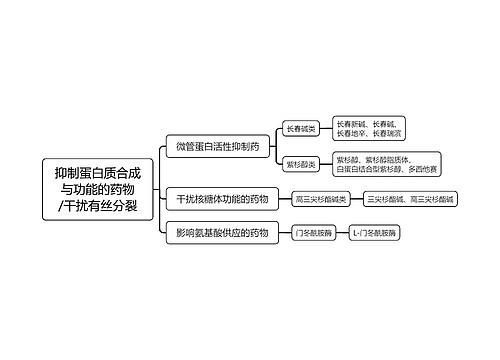
设备委外维修管理思维导图
 U577293230
U577293230树图思维导图提供《设备委外维修管理》在线思维导图免费制作,点击“编辑”按钮,可对《设备委外维修管理》进行在线思维导图编辑,本思维导图属于思维导图模板主题,文件编号是:b01d220904f8d856b522b5611a868312

相似思维导图模版
首页
我的文件
我的团队
个人中心
